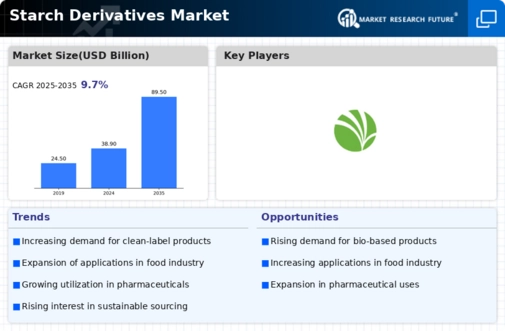Market Share
Starch Derivatives Market Share Analysis
The Starch Derivatives Market, a dynamic sector within the broader food and industrial ingredient industry, employs various market share positioning strategies to stay competitive and meet the evolving needs of consumers and businesses. One key approach is product differentiation, where companies strive to distinguish their starch derivatives from competitors' offerings. This may involve developing unique formulations, enhancing product functionalities, or incorporating innovative processing methods. By doing so, companies can carve out a niche for themselves, attracting consumers looking for specific attributes or benefits in starch-based products.
Another pivotal strategy is cost leadership, which involves optimizing production processes and supply chain efficiencies to deliver starch derivatives at lower costs than rivals. This approach enables companies to offer competitive pricing, capturing price-sensitive segments of the market. Cost leadership can be achieved through economies of scale, strategic partnerships, and continuous process improvements. As a result, companies can gain a larger market share by appealing to budget-conscious consumers and businesses seeking cost-effective starch solutions.
Market segmentation is another crucial aspect of the Starch Derivatives Market positioning strategies. Companies often identify distinct customer segments with unique preferences and requirements. By tailoring their starch derivatives to specific market segments, companies can address the diverse needs of customers, ranging from food manufacturers to pharmaceutical companies. This targeted approach allows for more effective marketing, product development, and customer satisfaction, ultimately helping companies secure a significant market share in their chosen segments.
Innovation plays a pivotal role in the starch derivatives industry, and companies looking to boost their market share invest in research and development to create novel products and applications. Whether it's developing starch-based alternatives for traditional ingredients or introducing innovative processing techniques, staying at the forefront of technological advancements enables companies to capture the attention of forward-thinking consumers and gain an edge over competitors. Continuous innovation not only enhances a company's market share but also positions it as a leader in the rapidly evolving starch derivatives landscape.
Strategic partnerships and collaborations are becoming increasingly prevalent in the Starch Derivatives Market. Companies recognize the benefits of joining forces with complementary businesses, such as suppliers, distributors, or research institutions. These collaborations can facilitate access to new markets, streamline the supply chain, and foster the exchange of knowledge and resources. By forming strategic alliances, companies can strengthen their market position, enhance competitiveness, and leverage the expertise of their partners to expand their market share in a mutually beneficial manner.
Environmental and social responsibility are gaining prominence in the starch derivatives industry, prompting companies to adopt sustainable practices and communicate their commitment to responsible business operations. Consumer preferences are shifting towards eco-friendly and socially responsible products, and companies that align with these values can attract a growing segment of conscious consumers. Implementing sustainable sourcing, reducing carbon footprints, and ensuring ethical business practices are integral components of market share positioning strategies in the Starch Derivatives Market.

















Leave a Comment